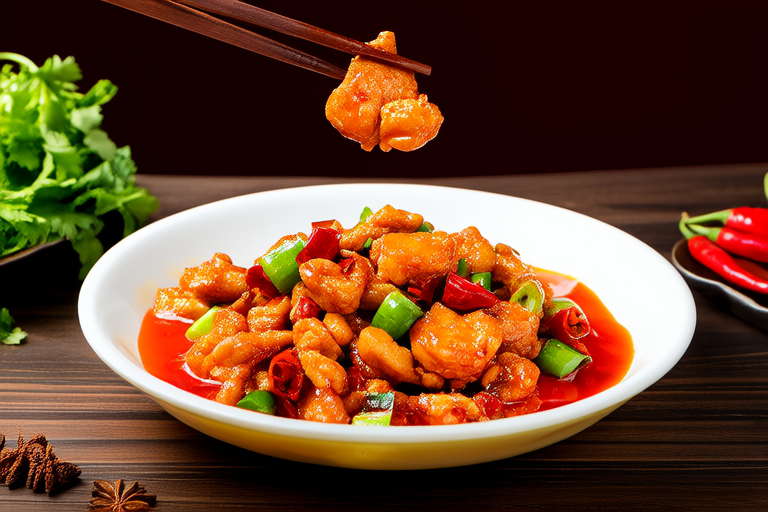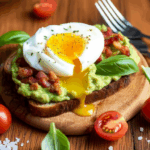Spicy Kung Pao Chicken: A Fiery Sichuan Delight
Introduction:
Welcome to the world of Sichuan cuisine, where the dance of flavors and spices is an art form. One of the most iconic dishes from this region is undoubtedly Kung Pao Chicken. With its signature blend of heat, umami, and tangy sweetness, it has become a beloved staple in Chinese restaurants around the globe. In this article, we will delve into the origins of this dish, explore its key ingredients, and guide you through the process of creating your own version at home. Whether you’re a seasoned cook or a novice in the kitchen, mastering Kung Pao Chicken will elevate your culinary skills and provide you with a dish that is both visually stunning and a feast for the senses.
The History of Kung Pao Chicken
Kung Pao Chicken, also known as Gong Bao Ji Ding in Mandarin, has a rich history that dates back to the Qing Dynasty. The dish was named after Ding Baozhen, a military officer who served as the governor of Sichuan Province during the late 19th century. According to legend, he enjoyed this dish so much that it became associated with his name. Over time, the recipe evolved and spread beyond Sichuan, eventually making its way to Western tables.
It’s important to note that traditional Kung Pao Chicken is made with peanuts and chili peppers, which are integral to the Sichuanese palate. However, as the dish gained popularity outside China, variations emerged, including versions with cashews, chicken breast instead of thighs, and less emphasis on spiciness. Despite these changes, the essence of Kung Pao Chicken remains rooted in its fiery flavor profile.
Key Ingredients for Authenticity
To achieve an authentic Kung Pao Chicken experience, it’s crucial to use high-quality ingredients. Here’s what you’ll need:
- Chicken: Boneless, skinless thighs are preferred for their richer flavor and juicier texture.
- Peanuts: Roasted and salted peanuts add crunch and complement the sauce’s spiciness.
- Dried Red Chilies: These provide the characteristic heat and smoky flavor essential to Sichuan cooking.
- Sichuan Peppercorns: Also known as “flower pepper,” these give the dish its unique numbing sensation.
- Garlic and Ginger: These aromatics enhance the overall depth of flavor.
- Vegetables: Typically bell peppers and onions are used for added color and freshness.
- Seasonings: Soy sauce, rice vinegar, sugar, and cornstarch help balance the flavors and thicken the sauce.
Preparing the Chicken
Begin by marinating the chicken pieces. Combine one tablespoon of soy sauce, half a teaspoon of cornstarch, and a pinch of white pepper. Mix well and let the chicken sit for about 15 minutes. This step ensures that the meat absorbs the flavors and stays moist during cooking.
Next, prepare the vegetables. Slice the bell peppers into strips and chop the onion into wedges. Mince the garlic and ginger finely. Set aside until ready to use.
Cooking the Dish
Heat a wok over medium-high heat and add two tablespoons of vegetable oil. Once hot, add the dried red chilies and Sichuan peppercorns. Stir-fry briefly until fragrant but be careful not to burn them. Remove from the wok and set aside.
In the same wok, increase the heat to high and add another tablespoon of oil. Add the marinated chicken and stir-fry until browned on all sides. Remove the chicken from the wok and set aside.
Reduce the heat to medium and return the reserved chilies and peppercorns to the wok along with the garlic and ginger. Stir-fry for another minute before adding the sliced bell peppers and onions. Cook until they start to soften.
Now it’s time to create the sauce. In a small bowl, mix together two tablespoons of soy sauce, one tablespoon of rice vinegar, one teaspoon of sugar, and one teaspoon of cornstarch dissolved in water. Pour this mixture into the wok and bring to a simmer, stirring constantly. Return the cooked chicken to the wok and toss everything together until evenly coated with the sauce.
Finally, add the roasted peanuts and stir gently. Taste and adjust seasoning if necessary. Serve immediately while still hot.
Presenting Your Dish
Once your Kung Pao Chicken is ready, garnish it with fresh cilantro leaves for a pop of color and extra aroma. You can also sprinkle some sesame seeds on top for added texture. Serve this dish alongside steamed rice or noodles to soak up all those delicious juices.
Tips for Success
– Use boneless, skinless thighs for better flavor and texture.
– Ensure all ingredients are prepped before starting to cook as this dish comes together quickly.
– Adjust the amount of dried red chilies based on your tolerance for heat.
– Don’t skip the Sichuan peppercorns; they are key to achieving the signature numbing effect.
– If possible, use freshly ground Sichuan peppercorns rather than pre-ground ones for optimal flavor.
Conclusion
Making Kung Pao Chicken at home allows you to customize the level of heat and other flavors according to personal preference. By following this recipe, you’ll not only enjoy a meal bursting with vibrant colors and tantalizing aromas but also gain insight into the cultural significance behind one of China’s most famous dishes. Happy cooking!


